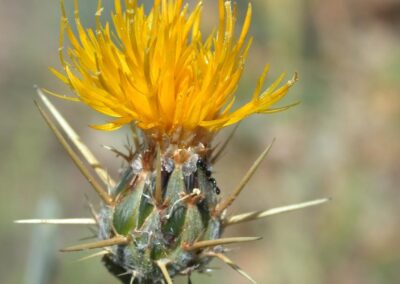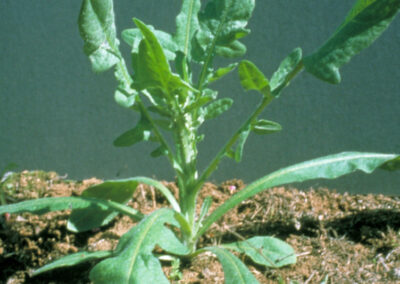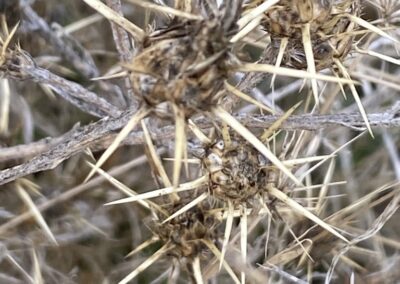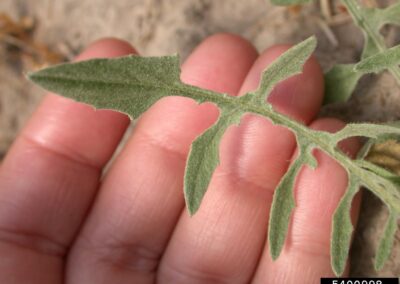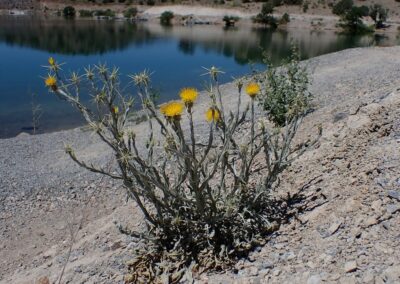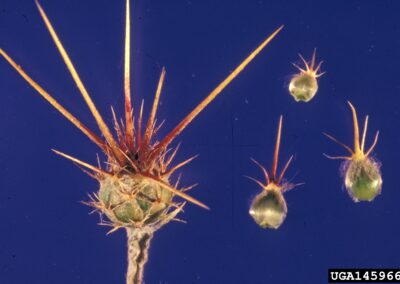
Yellow Starthistle
Centaurea solstitialis
Class A
Currently not present in New Mexico, or have limited distribution. Preventing new infestations of these species and eradicating existing infestations are the highest priorities.
Toxic to Horses
This plant has been documented to sicken or injure horses.
Children & Pets
This plant may pose a particular risk to unsupervised children and animals due to its toxicity or potential for injury.
Agricultural Threat
This plant threatens our state’s food security and economy by reducing agriculture yields and/or degrading soil resources.
QUICK FACTS
- Yellow starthistle can grow up to 5 feet tall and has long, sharp spikes around its yellow flowers. As it matures, it loses nutritional value to livestock, and the spikes deter livestock from grazing in contaminated fields. Spikes can also cause puncture wounds to those who come in contact with them.
- Originating from the Mediterranean region, yellow starthistle spread through contaminated alfalfa seeds, traveling from South America to California and later spreading to the majority of the U.S. It is now considered invasive in most Western states.
- Yellow starthistle is toxic to horses, causing a nervous disorder called “chewing disease”. It often outcompetes native plants by forming dense, allelopathic monocultures, which can have a severely negative impact on ecosystems.
1. Overview
An invader throughout the entire United States.
Yellow starthistle has become invasive throughout most of the U.S., but has become a severe problem in western states. It is often spread through contaminated seeds, but with its allelopathic tendencies, long germination cycle, and density, yellow starthistle can easily outcompete most native plants. Its sharp spikes and toxicity to horses limit grazing in contaminated fields. Yellow starthistle mainly grows in disturbed areas, but its long germination period gives this thistle more opportunities to outcompete other plants.
History of Yellow Starthistle
Yellow starthistle is native to the Mediterranean region and was likely introduced to the U.S. through contaminated alfalfa seeds in the early 1800s, but it was introduced several times during this time period. It has since become widespread throughout the U.S.; however, it is most common in western states. [1,2,4]
Evidence of its initial spread was found in California, where adobe bricks dated from 1824 to 1848 contained thistle seeds. It continued to spread through contaminated alfalfa seeds to fields and other disturbed areas. It is most commonly found in California, but can be found in forty-one states, including New Mexico. [2,3,4,5]
Yellow Starthistle was a traditional medicine in Turkey, often being used as an antibacterial and an antioxidant. [3]
2. ID Guide
What does it look like?
Yellow starthistle is a gray-green to blue-green forb that can be either an annual or biennial, depending on the region’s rainfall patterns, and can grow up to 5 feet tall. It has yellow thistle-like flowers with spikes around the base. Stems of mature plants are rigid and covered with a white, cottony wool. While similar in appearance to many varieties of knapweed and thistle, Yellow starthistle can be identified by spikes around the flower base, a yellow flower, and a preference for full sun. [1,2,3,4]
Having trouble identifying a weed? Contact your local conservation district or county extension agent.
Key Features
- Plant: This weed begins as a rosette with simple roots and continues to develop its roots until it is ready to bolt. Its stem appears winged, is rigid, and covered with a whitish cottony wool that extends to the stem’s leaves. The stem can vary in size from 4 inches to 5 feet tall. Yellow starthistle is compact and flat when in full sunlight, but larger in low-light settings. [1,2]
- Roots: Yellow starthistle has deep taproots that can extend over 3 feet down by mid-spring, growing at a rate of approximately one inch per day. [2,4]
- Leaves: Basal leaves are about 3 inches long and deeply lobed, and can vary in quantity from 6 to 28. The stem leaves are only about 1 inch long and entire (without lobes). The stem leaves are linear in shape and have woolly hairs throughout the growing season. [1,2]
- Flowers: Flower buds grow singly from the ends of a short stem, usually 6 weeks after germination. They have many bright, thistle-like yellow flowers. Straw-colored spikes grow from flower bracts in a radial star shape and are about 1 inch long. [1]
- Seeds: Nearly fully dispersed 3 weeks after flowering, and have a longevity of up to 10 years. Two types of seeds grow in seed heads; The outer rings are dark and lack a pappus, while the rest are brown with a pappus ring. Seeds germinate over an extended period, typically starting with the first rainfall and concluding with the last rain. Both seed types germinate at different times of year. Dense seedling cover causes seedlings to compete with each other for sunlight, resulting in low seedling survival rates. [3,4]
Mary Ellen (Mel) Harte, Bugwood.org
Yellow starthistles have many bright, thistle-like yellow flowers. Straw-colored spikes grow from flower bracts.
Cindy Roche, Bugwood.org
This weed begins as a rosette with simple roots and continues to develop its roots until it is ready to bolt.
Mary Ellen (Mel) Harte, Bugwood.org
The stem leaves are only about 1 inch long and entire (without lobes).
Radha Veach, inaturalist.org
The stem can vary in size from 4 inches to 5 feet tall. Yellow starthistle is compact and flat when in full sunlight, but larger in low-light settings.
3. Infestation Basics
“Yellow starthistle is one of the most problematic exotic plant species currently threatening rangeland and conservation areas in the western USA.”
-Randall, Winston, Jette, Pitcairn, and DiTomaso, 2017
Where and how does it grow, and how does it spread?
Yellow starthistle is usually found in or around contaminated fields or recently disturbed areas. It enjoys sunny, well-drained soils with nutrients, but can grow in a variety of areas because of its ability to pull moisture from deep soils and bedrock. [3]
This weed prefers full sun and is not shade-tolerant. It prefers well-drained soils, so it is often found outcompeting grasses and other forbs in fields or other open areas. It can thrive in areas with annual rainfall between 10 to 60 inches, but cannot tolerate flooding. Yellow starthistle rosettes are frost-tolerant, but fully mature plants are not. [2,3]
Yellow starthistle acts mainly as an annual, usually germinating during rainfall in spring or fall, drying out, and dispersing hundreds to thousands of seedlings. After the seeds fully mature, the plant dies. Yellow starthistle can also sprout from leftover root crowns. Germination is dependent on rainfall, and fewer seeds are produced in years of drought. Under less favorable conditions, this weed can act as a biennial, with only a root and basal rosette until its seeds are mature enough to germinate. [1,3]
The weed begins to flower about 9 weeks after germination, and dries out within 2 weeks of the flowering period, spreading most of its seeds before it fully dries. Some seeds stay attached until the spikey bract falls off the following year. [3]
Yellow thistle grows its roots, then its basal leaves, then its stem, and finally its flowers before it dries and disperses its seeds. [2]
Seeds can travel short distances by wind, but are spread mainly by attaching to wildlife, livestock, clothing, vehicles, and equipment. Seeds also stay on dried plants to root themselves in the same area. It can also regrow from leftover root crowns. [1,3,6]
Key takeaway: Yellow starthistle spreads through seed dispersal to well-drained soils, usually in disturbed areas. It is shade-intolerant and cannot survive in flooded areas.
Why is it so invasive?
This weed has sharp spikes around flowers, which deters livestock and wildlife from areas where it has established itself. It lowers grain and hay quality and palatability. Because this weed is avoided by livestock, other plants are grazed first, giving it more space to spread. Additionally, yellow starthistle produces hundreds to thousands of seeds per plant, making it difficult to stop the spread once it has started.
The spikes often cause harm to animals and humans who pass by, and outcompete native and other desired plants by allelopathy (chemically poisoning other plants). While edible to most livestock, it loses nutritional value as the plant matures and becomes dangerous once spikes grow. They are toxic to horses, causing a neurological condition that has no current cure [1, 6]
Honey Bees use pollen from yellow starthistle as a food source, and contribute to plant fertilization and seed dispersal. [4,6]
Key takeaway: Yellow starthistle is toxic to horses, and spikes are dangerous to livestock, wildlife, and humans. They are allelopathic, which deters the growth of other plants, creating monocultures when left unchecked.
Common risk factors for invasion
- Open spaces: The weed favors open, sunny environments with little to no canopy cover, such as pastures, cultivated fields, and south-facing slopes. These conditions allow the weed to establish quickly and outcompete other plants. Maintaining healthy, large-leafed vegetation in these areas can help limit its spread.
- Soil disturbance: Yellow starthistle is particularly fond of invading areas where soil has been disturbed, such as construction sites, tilled fields, or overgrazed pastures. This disruption weakens existing vegetation and allows the weed to become established. Minimizing unnecessary soil disturbance can help reduce the risk of invasion.
- Human activity: This weed thrives in areas where the soil has been disturbed, such as construction sites, agricultural fields, roadsides, and other places where the natural vegetation has been disrupted. These disturbances create openings in the soil that allow the plant to become established in the first place. Additionally, the movement of soil, agricultural products, and equipment can inadvertently introduce yellow starthistle to new areas.
- Seed contamination: Yellow starthistle seeds often appear in contaminated grain, legume seeds, or other agricultural seed crops. Knowledge of seed origins and cleaning planting equipment can help prevent infestations.
- Moisture availability: While yellow starthistle has adapted to a wide range of soil and water conditions, it does generally require adequate moisture to establish and spread, making irrigated lands and areas with consistent rainfall particularly vulnerable. Permanent waterlogging will kill the plant, so infestations are more pernicious on sites with well-draining soil.
Impacts
Livestock
Yellow starthistle is edible to most livestock besides horses; however, once the plant develops spikes around its flower, most livestock are deterred from grazing in those areas or are injured by those spikes. [6]
Ecosystem Health
Once established, Yellow starthistle displaces native plants via dense monocultures and allelopathy, resulting in loss of biodiversity. This can significantly reduce forage availability for wildlife, further decreasing diversity and wildlife habitat. This weed also depletes the soil of its nutrients and alters water cycles. [3,6]
Agriculture and Food Security
Farmers and ranchers face increased costs associated with managing this weed, including expenses for herbicides, additional labor, and mechanical control measures. It can reduce the available forage for domestic livestock and cause injury. It can infest grain fields and other agricultural areas, where seeds can contaminate grain harvest and lower crop quality and value. Yellow starthistle can also drain groundwater, reducing soil quality for future crops. [3,6]
Health and Safety
Yellow starthistle can physically injure children, workers, livestock, and wildlife, causing puncture wounds or infections. The obstruction of firebreaks and pathways by large weed infestations can exacerbate fire risks in dry regions, threatening property and personal safety. Horses are particularly vulnerable to developing chewing disease and mouth ulcers after consuming this plant. [6]
4. Management Strategies
While preventative measures are best, yellow starthistle is easiest to manage early in its lifecycle, varying depending on the method used. Herbicides work best before seeds have germinated, and hand-plucking is suggested before the stem has grown, due to the deep roots. Mowing and grazing stop seed spread and are most effective before flowering or spike growth; however, they do not kill plants completely. Burning can be effective in highly contaminated areas if done consecutively for several years, but due to the longevity of seeds, it is not guaranteed to eradicate all plants. [1,2,3,4]
DO’s
- Encourage the growth of native plants. Yellow starthistle cannot tolerate shade, and is less likely to germinate in dense, undisturbed areas.
- Mow, cut, or pluck plants before flowering has occurred. This prevents new plant growth and limits reproductive success.
- Combine several management methods, including mechanical, herbicides, and seeding of desired plants.
DON’Ts
- Avoid disturbing the soil unnecessarily, as tilling and digging give yellow starthistle the opportunity to grow and spread.
- Allow livestock to overgraze. Disturbed soils are ideal for weed growth and leave less space for native and desired plants.
- Wait until it is a widespread issue. Yellow starthistle is most manageable in individual, small infestations.
** The following information is provided courtesy of the UC Weed Research and Information Center. nmweeds.org does not endorse the use of any particular product, brand, or application thereof. **
Yellow starthistle (like many weeds) is easiest to manage when young or when plants are in their first year. Non-chemical methods such as burning, mowing, or physical removal, can be effective but requires repeated efforts over multiple seasons.
| Hand-pulling | Hand pulling, grubbing, or digging of yellow starthistle is most effective with small patches or where plants are sporadically located. Preventing seed production for 3 years can reduce or eliminate an infestation. |
| Mowing | Mowing is not effective at killing plants, but it reduces seed production when done at full bloom. Regrowth occurs from root crowns when the tops are removed. |
Grazing alone will not provide long-term management or eradication.
Prescribed burning can help over several years in the right climatic and environmental conditions; however, it is not considered an effective tool for control.
Six insects have become established for the control of yellow starthistle in western states. These include three species of weevils (seed-head weevil [Bangasternus orientalis], flower weevil [Larinus curtus], and the hair weevil [Eustenopus villosus]) and three species of flies (seed-head fly [Urophora sirunaseva], peacock fly [Chaetorellia australis], and the false peacock fly [Chaetorellia succinea]). All six insects attack flower heads and produce larvae that develop and feed on seed heads. Eustenopus villosus and Chaetorellia succinea significantly impact reproduction, but are not sufficient to provide long-term yellow starthistle management.
Mediterranean rust fungus (Puccinia jaceae) can attack leaves and stems of yellow starthistle, causing enough stress to reduce flowerhead and seed production, but it doesn’t seem to impact populations greatly.
- CHEMICAL
- Growth Regulators
- Aromatic Aminoacid Inhibitors
- Branched-Chain Amino Acid Inhibitors
- Photosynthetic Inhibitors
The following specific use information is based on published papers and reports by researchers and land managers. Other trade names may be available, and other compounds also are labeled for this weed. Directions for use may vary between brands; see label before use. Herbicides are listed by mode of action and then alphabetically. The order of herbicide listing is not reflective of the order of efficacy or preference.
|
2,4-D Several names |
Rate: 1 to 1.5 pt product/acre (0.48 to 0.72 lb a.e./acre) for small rosettes, 2 to 4 pt product/acre (0.95 to 1.9 lb a.e./acre) for larger plants up to bolting Timing: Postemergence from rosette to the beginning of bolting, but before flowering. Remarks: 2,4-D controls larger plants well, but is not considered as effective as other growth regulator herbicides for season-long control. It is broadleaf-selective and may injure other non- target species, particularly crop plants. 2,4-D has no soil activity. Do not apply ester formulation when outside temperatures exceed 80°F. Amine forms are as effective as ester forms for small rosettes, and amine forms reduce the chance of off-target movement from volatility. |
|
Aminocyclopyrachlor + chlorsulfuron Perspective
|
Rate: 3 to 5 oz product (Perspective)/acre Timing: Postemergence and preemergence. Postemergence applications are most effective when applied to plants from the seedling to the mid-rosette stage. Remarks: Aminocyclopyrachlor gives control of yellow starthistle similar to aminopyralid. Perspective provides broad-spectrum control of many broadleaf species. Although generally safe to grasses, it may suppress or injure certain annual and perennial grass species. Do not treat in the root zone of desirable trees and shrubs. Do not apply more than 11 oz of product/acre per year. At this high rate, cool-season grasses will be damaged, including bluebunch wheatgrass. Not yet labeled for grazing lands. Add an adjuvant to the spray solution. This product is not approved for use in California and some counties of Colorado (San Luis Valley). |
|
Aminopyralid Milestone |
Rate: 3 to 5 oz product/acre (0.75 to 1.25 oz a.e./acre). Use higher rates when weeds are larger. Timing: Postemergence and preemergence. Postemergence applications are most effective when applied to plants from the seedling to the mid-rosette stage. Earlier applications (i.e., in fall) may not provide full-season control, and later applications (bolting to early spiny stage) will require higher rates. Remarks: Aminopyralid is one of the most effective herbicides for the control of yellow starthistle. It is safe on grasses, although preemergence application at high rates can greatly suppress invasive annual grasses, such as medusahead. Aminopyralid has a longer residual and higher activity than clopyralid. Other members of the Asteraceae and Fabaceae are very sensitive to aminopyralid. For postemergence applications, a non-ionic surfactant (0.25 to 0.5% v/v spray solution) enhances control under adverse environmental conditions; however, this is not normally necessary. Other premix formulations of aminopyralid can also be used for yellow starthistle control. These include Opensight (aminopyralid + metsulfuron; 1.5 to 2 oz product/acre) and Forefront HL (aminopyralid + 2,4-D; 2 to 2.6 pt product/acre), both applied at the rosette to bolting stages. |
|
Clopyralid Transline |
Rate: 0.25 to 0.67 pt product/acre (1.5 to 4 oz a.e./acre). Seedlings and rosettes can be treated at the lower rate, but bolted plants should be treated at higher rates. Timing: Postemergence and preemergence. For postemergence application, apply to plants from seedling to mid-bolting stage. However, since clopyralid has a shorter soil residual compared to aminopyralid, optimal timing is at the later rosette stages, but before bolting. Earlier applications (i.e., in fall) may not provide full-season control, and later applications (bolting to early spiny stage) will require higher rates and may not give sufficient control. Remarks: Clopyralid gives excellent control of yellow starthistle. While it is very safe on grasses, it will injure many members of the Asteraceae, particularly thistles, and can also injure legumes, including clovers. Most other broadleaf species and all grasses are not injured. When clopyralid is used to control seedlings a surfactant is not necessary. However, when treating older plants or plants exposed to moderate levels of drought stress, surfactants can enhance the activity of the herbicide.
|
|
Clopyralid + 2,4-D Curtail |
Rate: 2 to 4 qt Curtail/acre Timing: Same as for clopyralid. Remarks: Add a non-ionic surfactant. |
|
Dicamba Banvel, Clarity |
Rate: 0.5 pt product/acre (0.25 lb a.e./acre) for seedlings, 1 to 1.5 pt product/acre (0.5 to 0.75 lb a.e./acre) for larger plants up to bolting. Timing: Postemergence to plants from rosette to beginning of bolting. Remarks: Dicamba is a broadleaf-selective herbicide often combined with other active ingredients. It is not typically used alone to control yellow starthistle. Dicamba is available mixed with diflufenzopyr in a formulation called Overdrive. This has been reported to be effective on yellow starthistle. Diflufenzopyr is an auxin transport inhibitor which causes dicamba to accumulate in shoot and root meristems, increasing its activity. Overdrive is applied postemergence at 4 to 8 oz product/acre to rapidly growing plants. Higher rates should be used on large annuals. Add a non-ionic surfactant to the treatment solution at 0.25% v/v or a methylated seed oil at 1% v/v solution. |
|
Picloram Tordon 22K |
Rate: 1 to 1.5 pt product/acre (4 to 6 oz a.e./acre) Timing: Postemergence and preemergence. Postemergence applications should be made to plants from rosette to bud formation stage. Apply when there is adequate soil moisture and weeds are growing rapidly. Remarks: Picloram acts much like aminopyralid, aminocyclopyrachlor, and clopyralid, but gives a broader spectrum of control and has much longer soil residual activity. It can provide about 2 to 3 years of control. Most broadleaf plants are susceptible. Although well-developed grasses are not usually injured by labeled use rates, some applicators have noted that young grass seedlings with fewer than four leaves may be killed. Do not apply near trees. Tordon 22K is a federally restricted use pesticide. Picloram is not registered for use in California. |
|
Triclopyr Garlon 3A, Garlon 4 Ultra |
Rate: 1 pt Garlon 4 Ultra or 1.33 pt Garlon 3A/acre (0.5 lb a.e./acre) for seedlings, up to 3 pt Garlon 4 Ultra or 4 pt Garlon 3A/acre (1.5 lb a.e./acre) for larger plants. Timing: Postemergence from seedling to bolting stage. Remarks: Triclopyr has little to no residual activity. It is broadleaf-selective and typically does not harm grasses. Garlon 4 Ultra is formulated as a low volatile ester. However, in warm temperatures, spraying onto hard surfaces such as rocks or pavement can increase the risk of volatilization and off-target damage. |
|
Glyphosate Roundup, Accord XRT II, and others |
Rate: Most control efforts use spot treatments of a 5% glyphosate v/v solution of Rodeo or Aquamaster (2.5% a.e.). Timing: Postemergence, to plants that are fully mature, but before flowers produce viable seeds. This is likely during the early summer months. Remarks: Glyphosate is a nonselective herbicide with no soil activity. It has proven to be the most effective chemical control option for Ravenna grass. There have also been reports that a 5% glyphosate solution mixed with 1% imazapyr (Habitat) will give very effective control. |
|
Chlorsulfuron Telar |
Rate: 1.33 to 2.6 oz product/acre (1 to 1.95 oz a.i./acre) Timing: Preemergence activity only. Chlorsulfuron does not have postemergence activity on yellow starthistle and must be used in combination with 2,4-D, dicamba, or triclopyr to provide effective control. Remarks: Chlorsulfuron has mixed selectivity on both broadleaf and grass species but is generally safe on grasses. It has fairly long soil residual activity. Herbicide solution requires constant agitation during application. |
|
Imazapyr Arsenal, Habitat, Stalker, Chopper, Polaris |
Not often used for yellow starthistle control but has been shown to be somewhat effective at 3 to 4 pt product/acre. It has preemergence and some postemergence activity, and a long soil residual. |
|
Sulfometuron Oust and others |
Not often used for yellow starthistle control but has been shown to be somewhat effective at 1 to 2 oz product/acre. It has preemergence activity only, and a long soil residual. |
|
Hexazinone Velpar L |
Not often used for yellow starthistle control but has been shown to be somewhat effective at 1 to 2.5 gal product/acre. It has preemergence activity only, and a long soil residual. High rates of hexazinone can create bare ground, so only use high rates in spot treatments. |
6. References
Citations
[1] PPQ. 2018. Weed risk assessment for Tripleurospermum inodorum (L.) Sch. Bip (Asteraceae) –Scentless mayweed. United States Department of Agriculture, Animal and Plant Health Inspection Service, Plant Protection and Quarantine (PPQ), Raleigh, NC. 23 pp.
[2] MSU. (2018). Scentless chamomile-March_2018 – MSU Extension Invasive Plants | Montana State University. Montana.edu. https://www.montana.edu/extension/invasiveplants/extension/monthly-weed-posts/2018_march.html
[3] Klein, H. (2008). Scentless chamomile. In Alaska.edu. Alaska Natural Heritage Program. https://accs.uaa.alaska.edu/wp-content/uploads/Tripleurospermum_inodorum_BIO_TRIN11.pdf
[4] Kay, Q. O. N. (n.d.). Tripleurospermum Inodorum (L.) Schultz Bip. Journal of Ecology, 82(3), 681–697. https://doi.org/doi.org/10.2307/2261275.
[5] UNR. (2020). Scentless Chamomile: Taxonomy, Ecology, and Control | Extension | University of Nevada, Reno. Extension | University of Nevada, Reno. https://extension.unr.edu/publication.aspx?PubID=2422
[6] McClay, A.S. 2022. Scentless Chamomile (Tripleurospermum inodorum): History and Ecology in North America. In: R.L. Winston, Ed. Biological Control of Weeds in North America. North American Invasive Species Management Association, Milwaukee, WI. NAISMA-BCW-2022-35-SCENTLESS CHAMOMILE-P.
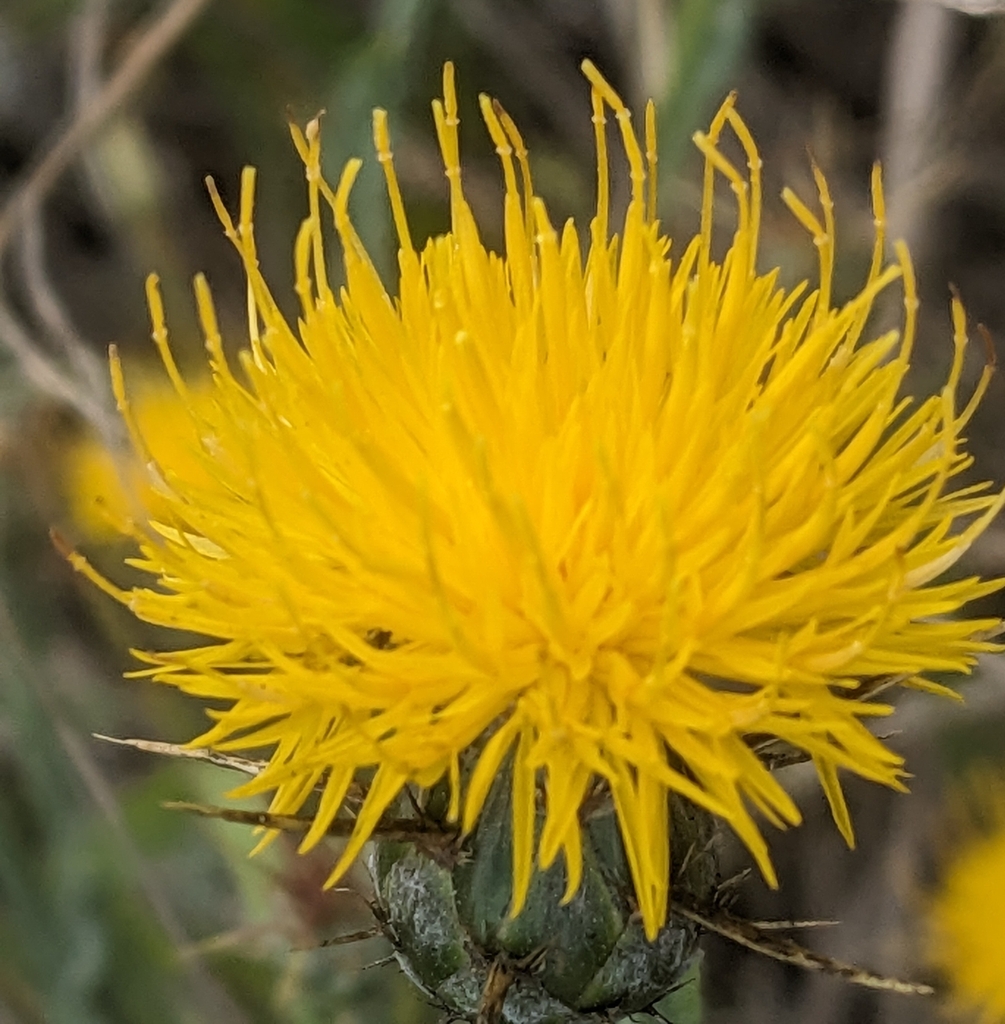
Richard Shirky, inaturalist.org
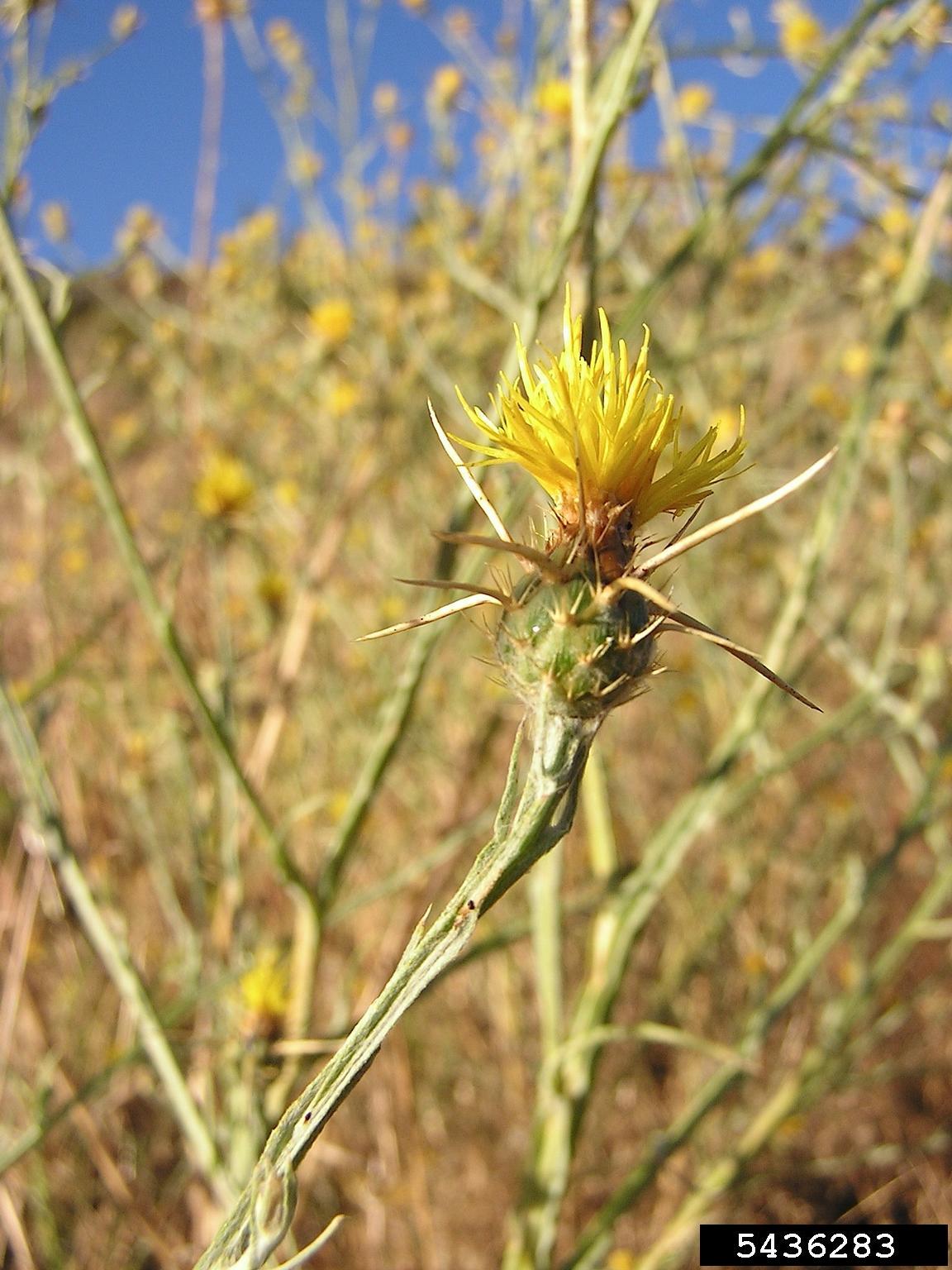
Eric Coombs, Oregon Department of Agriculture, Bugwood.org
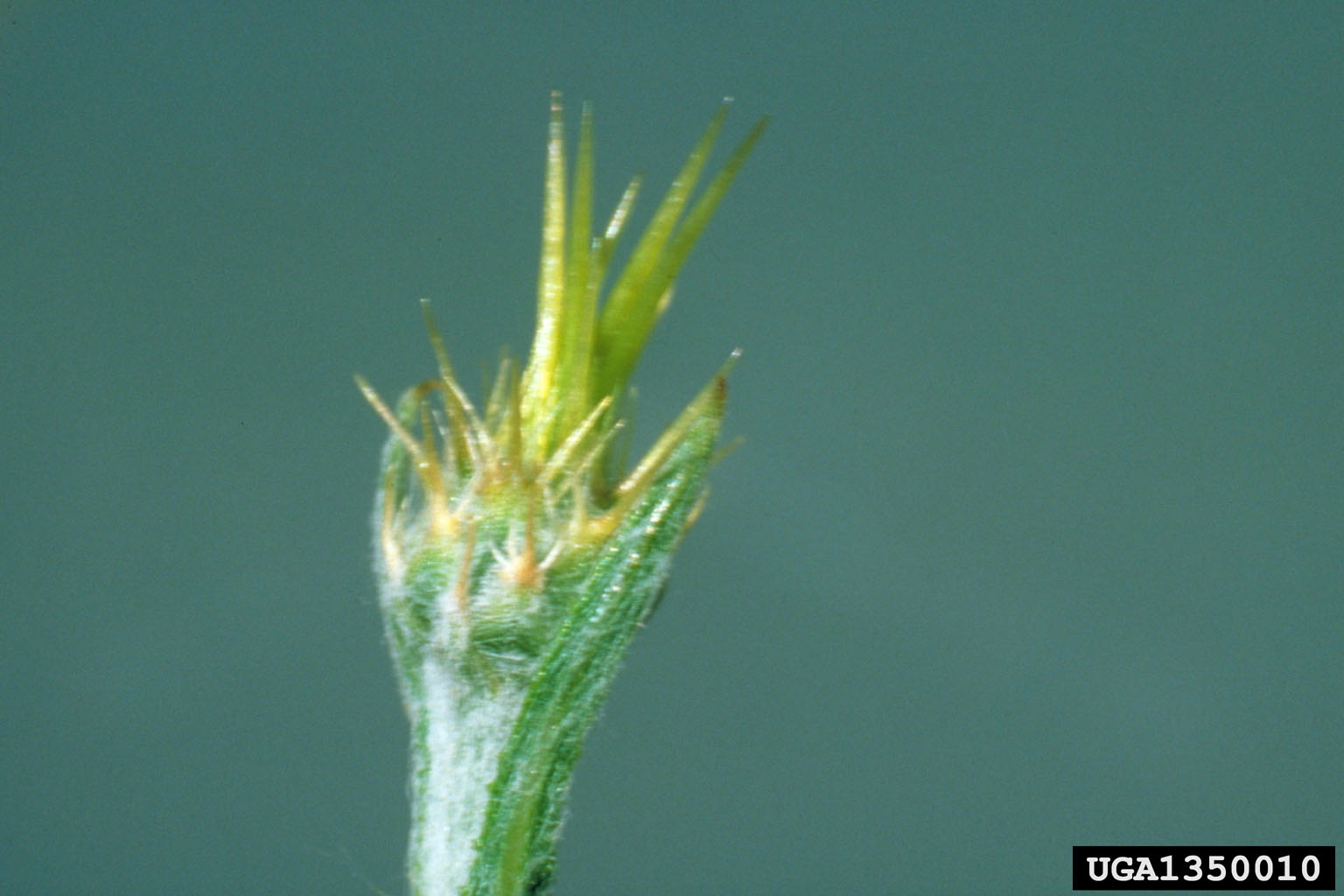
Cindy Roche, Bugwood.org
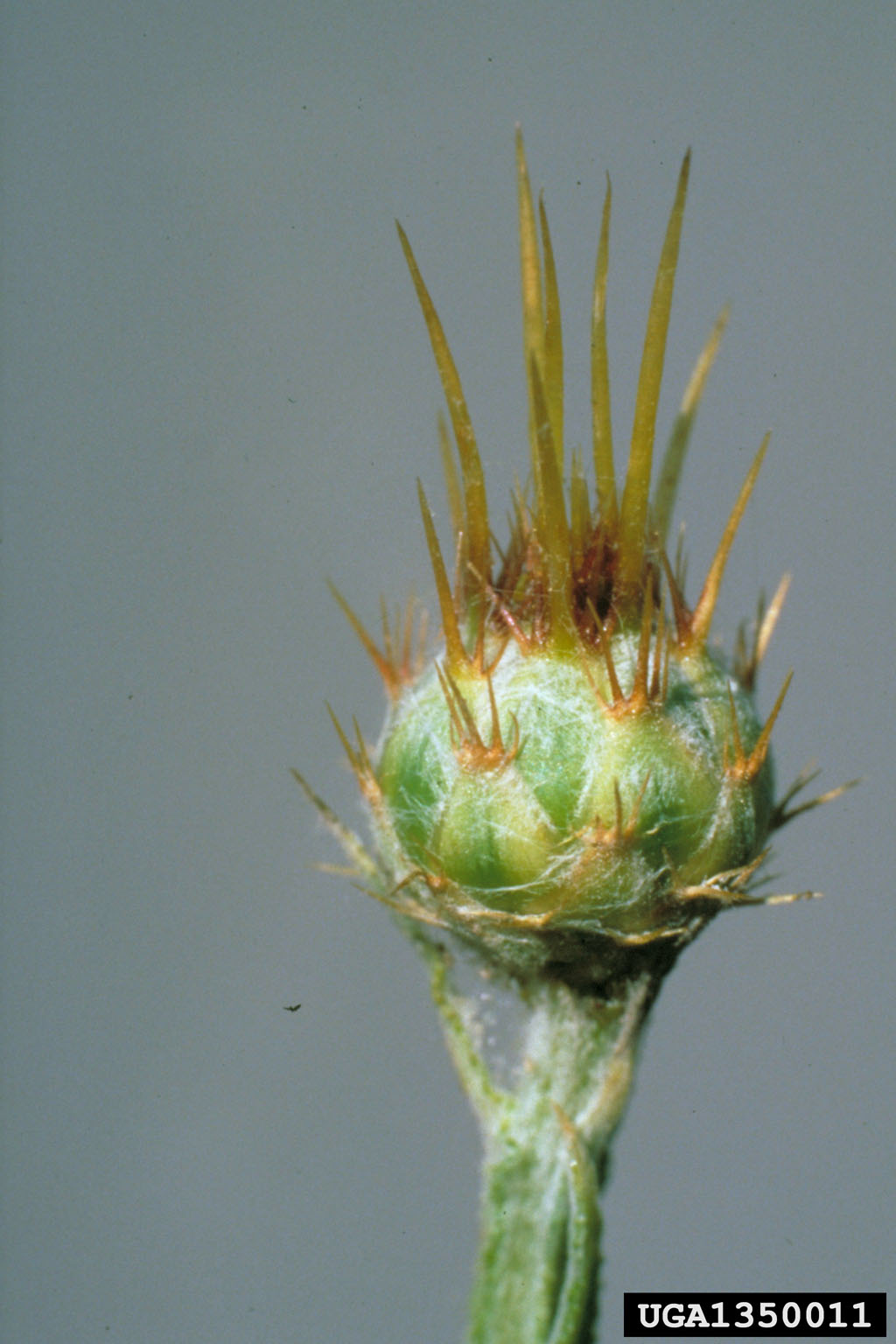
Cindy Roche, Bugwood.org
Fun Facts
Despite its invasiveness, yellow starthistle is considered a vital nectar source for honey in most western states, since bumblebees and honeybees use it as a late-season food source. [4,6]
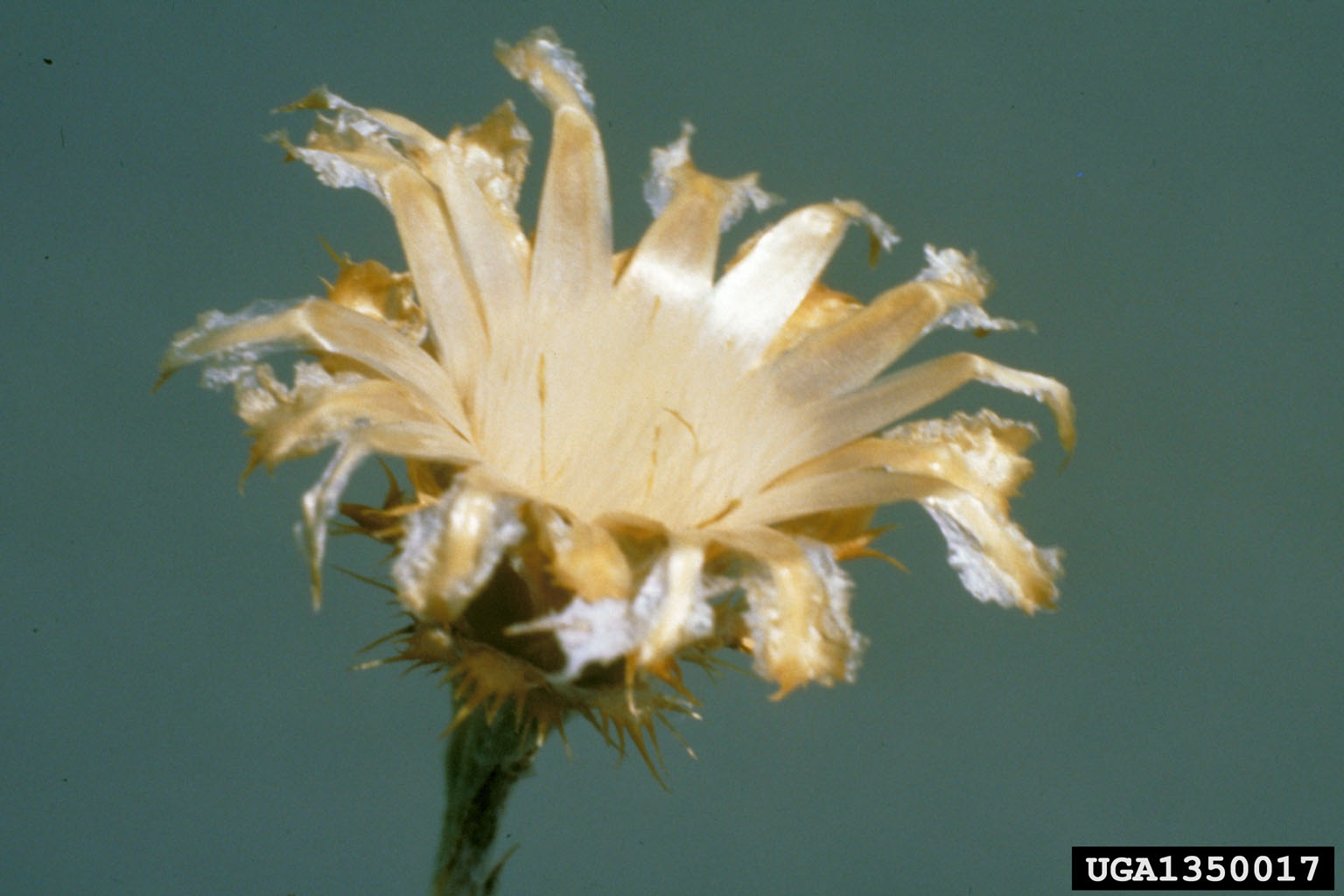
Cindy Roche, Bugwood.org

University of Idaho , University of Idaho, Bugwood.org
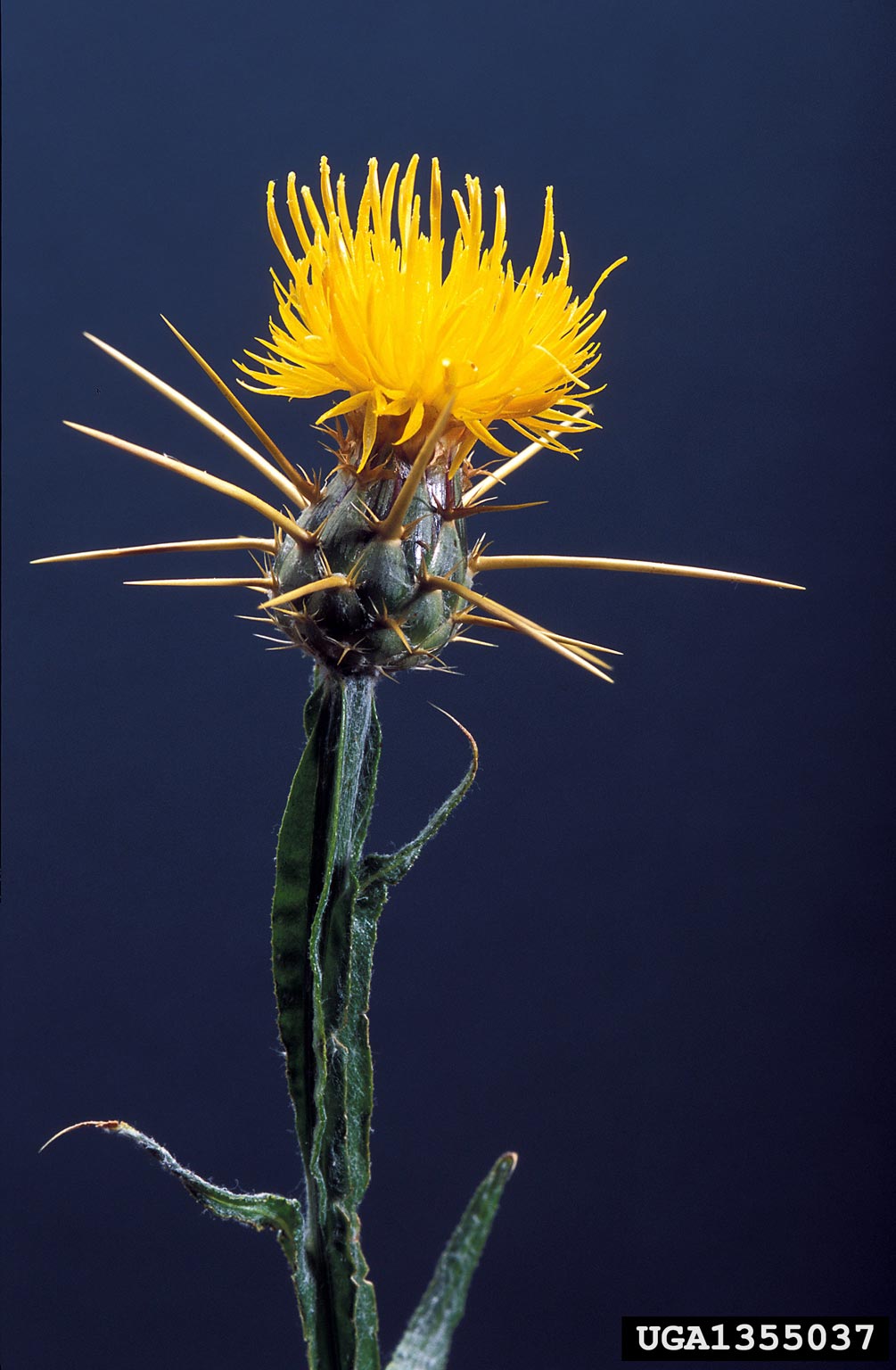
Stephen Ausmus, USDA Agricultural Research Service, Bugwood.org
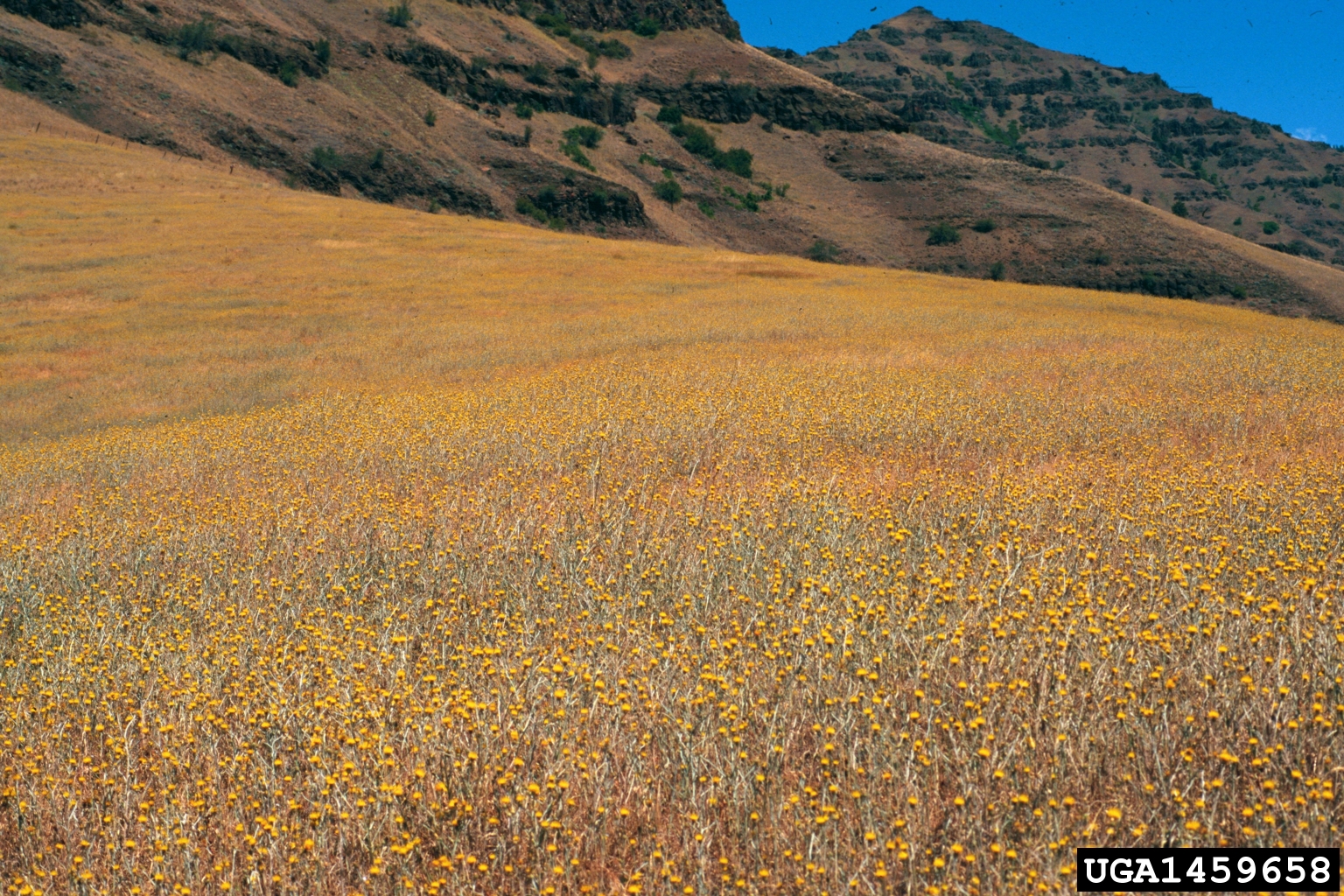
Steve Dewey, Utah State University, Bugwood.org
Fun Facts
Traditionally, yellow starthistle was used as a medicinal herb in Turkish folk medicine as an antibacterial, antiviral, and antifungal. Studies with rats have shown that it may be able to treat ulcers and tumors. [3]
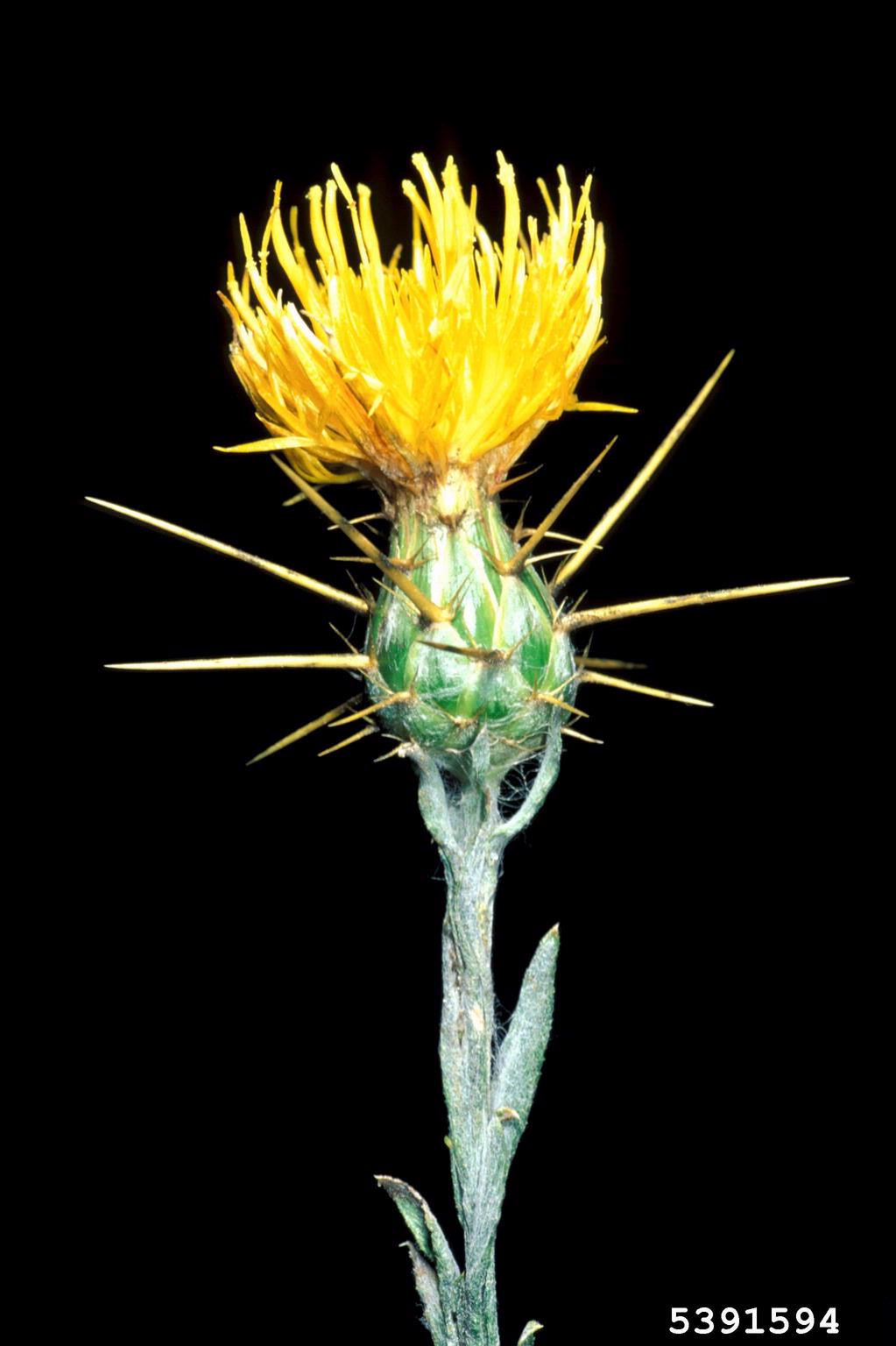
Barry Rice, sarracenia.com, Bugwood.org
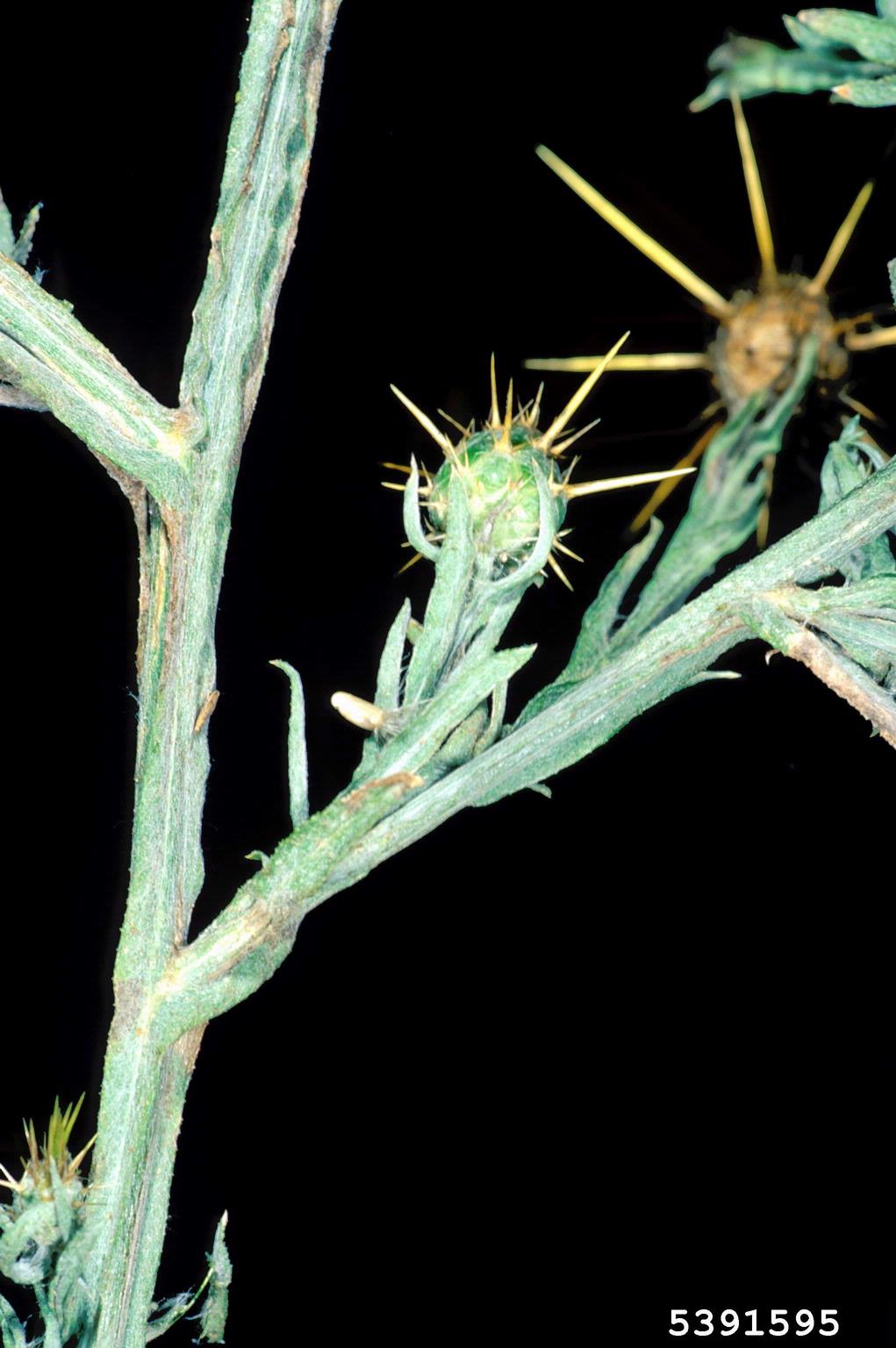
Barry Rice, sarracenia.com, Bugwood.org
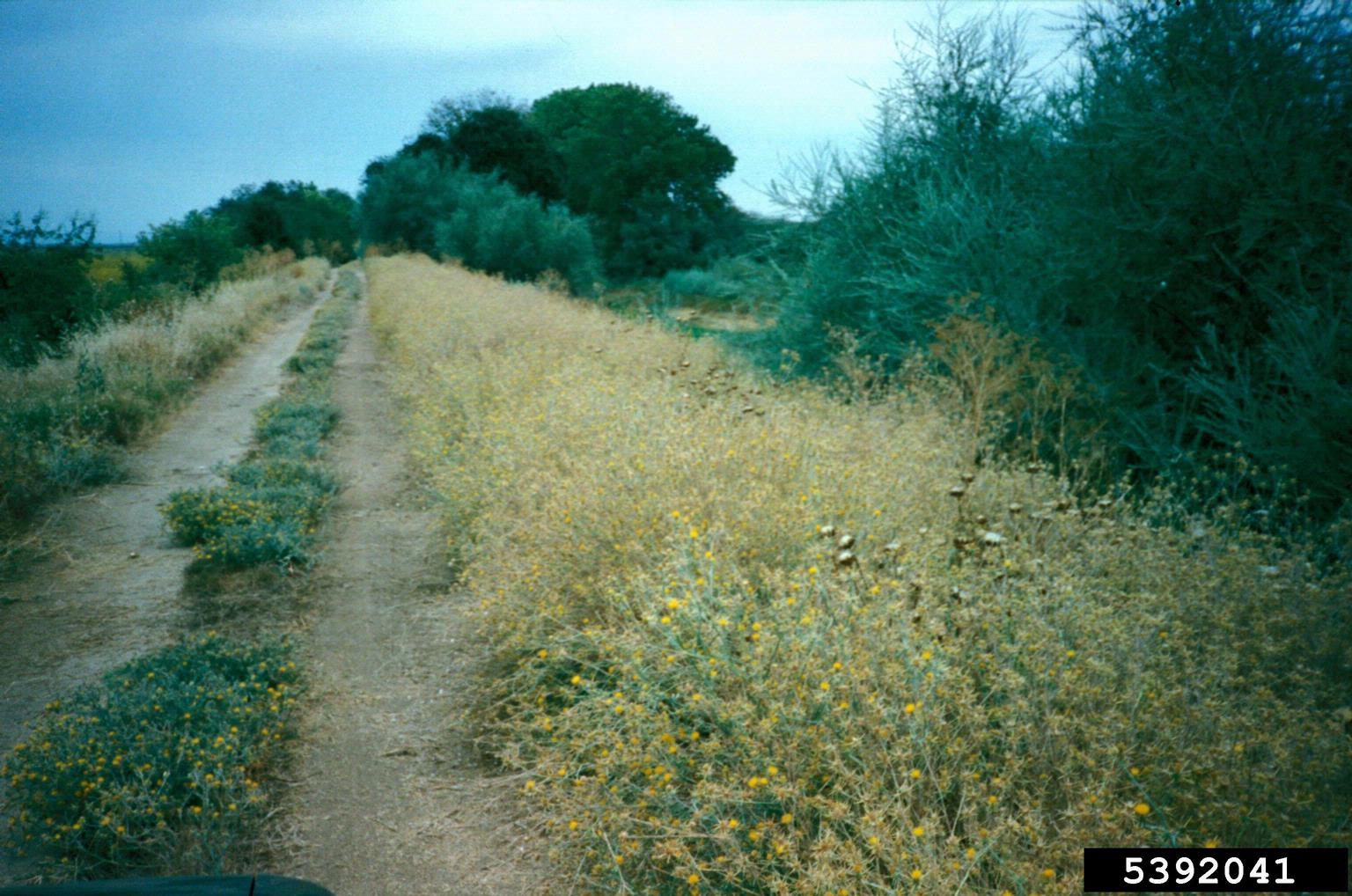
John M. Randall, The Nature Conservancy, Bugwood.org
Fun Facts
Because of the similarities of brain tissue of a horse with equine nigropallidal encephalomalacia and humans with Parkinson’s disease, yellow starthistle is being used to identify neurotoxic substances and help better understand Parkinson’s disease. [3]
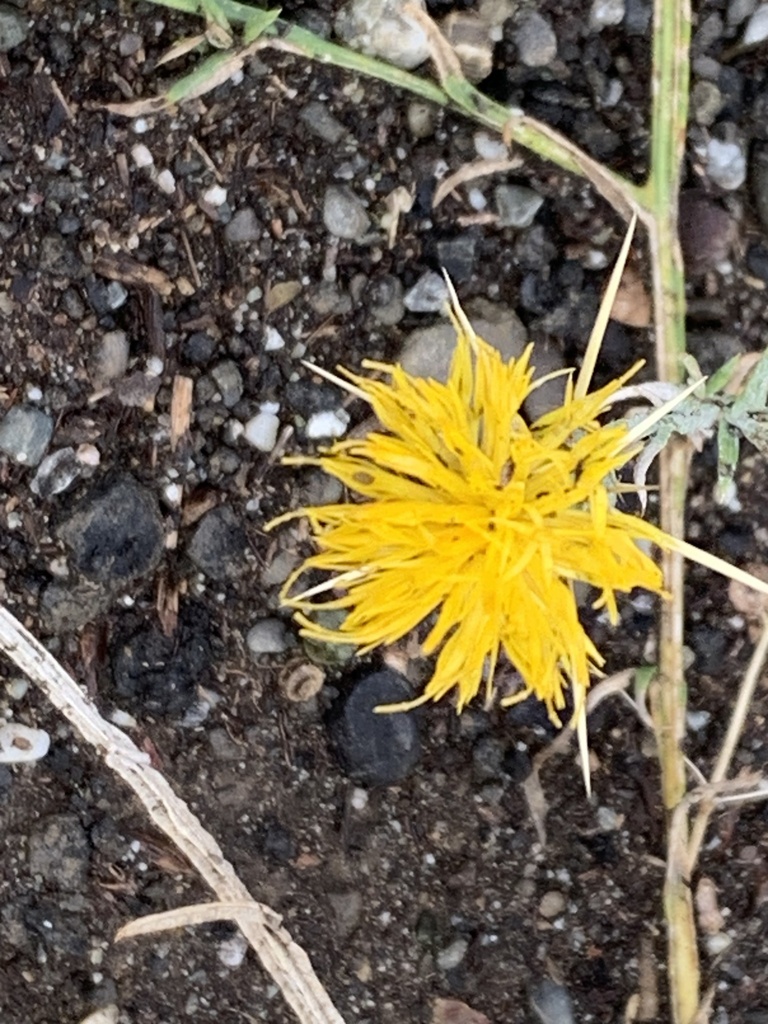
Silverado Jim, inaturalist.org
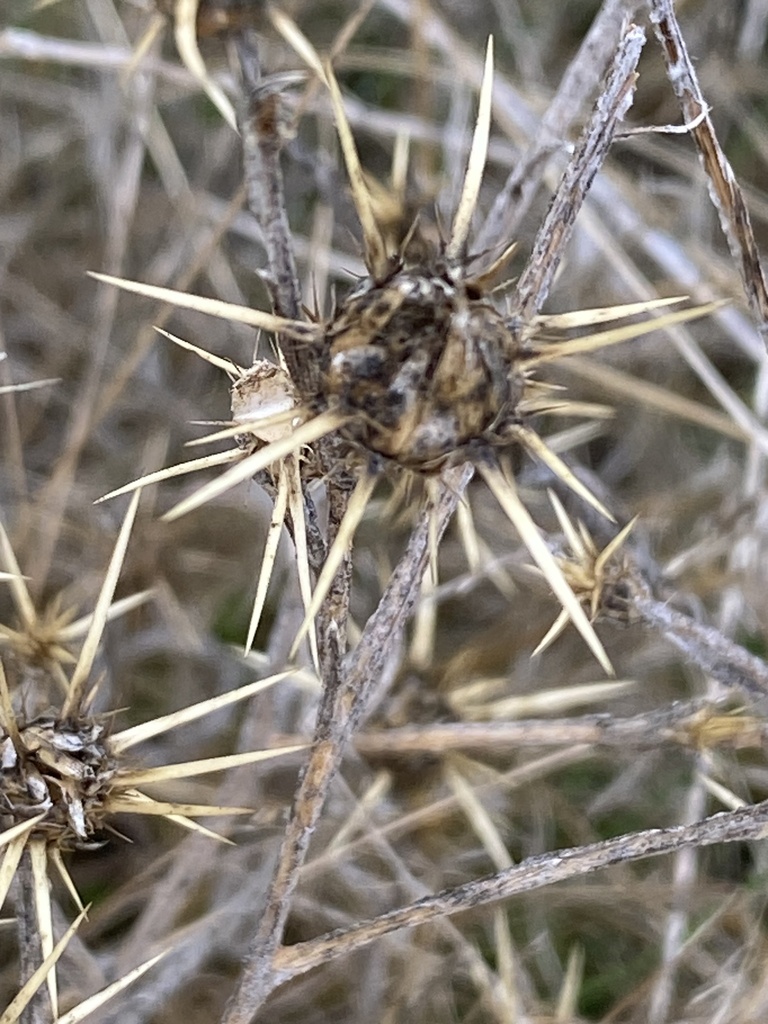
andreareid, inaturalist.org
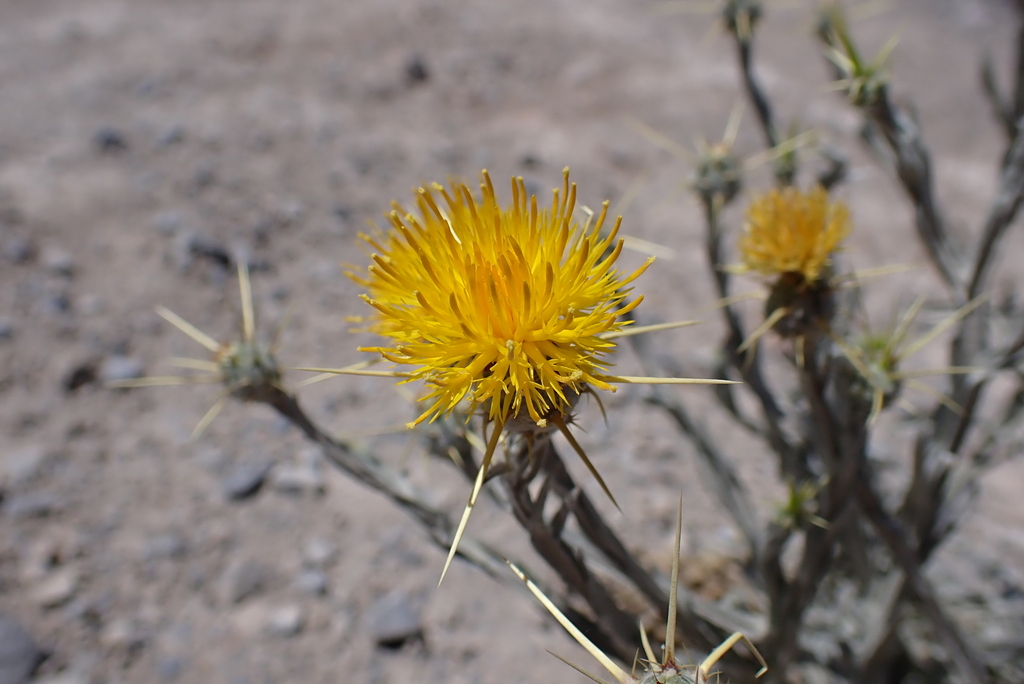
Radha Veach, inaturalist.org
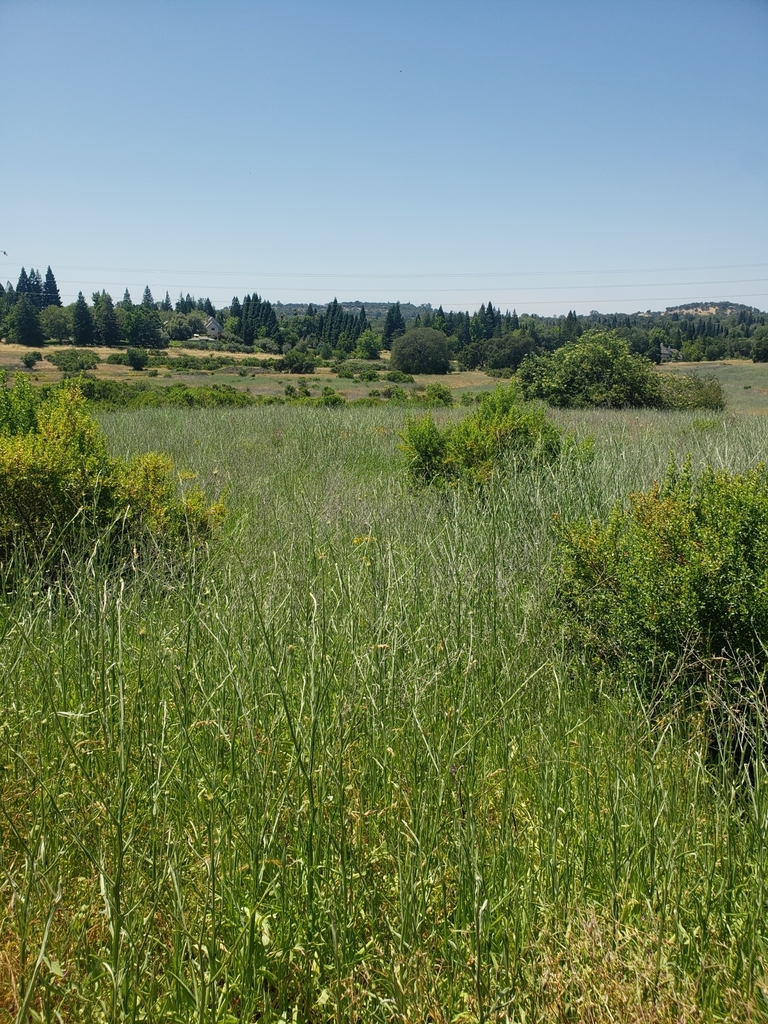
Marisol Villarreal, inaturalist.org

